The sacred city of the Incas is Machu Picchu. Machu Picchu. Lost City of the Incas.
Machu Picchu - city amazing story And unsolved mysteries, included in the list of 7 new wonders of the world. We invite you to find out why he was included in this list.
It is still unknown exactly when exactly the last inhabitants of this lost city died, but we know almost for sure that no one even suspected the existence of a mysterious settlement high in the Peruvian mountains for more than three centuries! The name of the city, Machu Picchu, literally translates as “old mountain.” The settlement is located on an almost flat area of one of the many mountains of Peru, surrounded by other, no less beautiful peaks
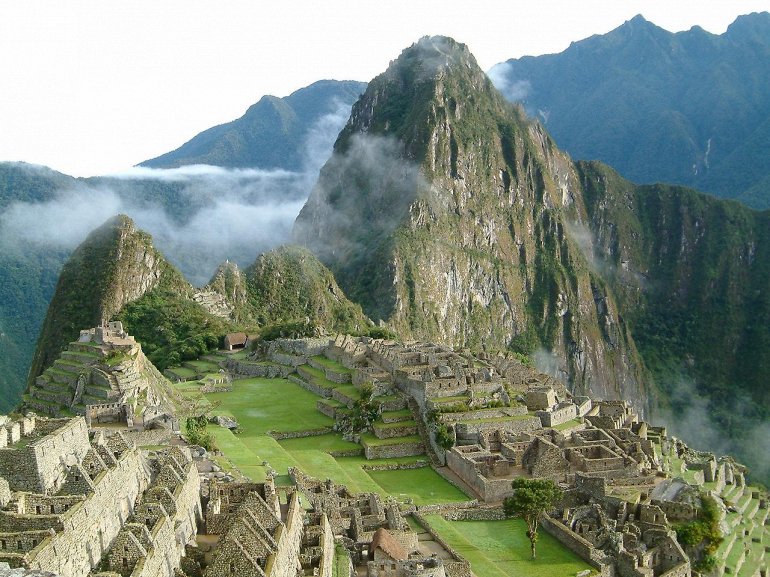
Neither the Spanish conquistadors who captured Peru in the 16th century, nor those who came here after them, nor the Incas themselves who lived in Machu Picchu left any written evidence that the city exists. Most likely, the Spaniards could not even think that there was an Inca settlement on one of the mountains. The abandoned ancient city was discovered only at the beginning of the 20th century...

Among archaeologists around the world, the legend of the mysterious Inca city in Peru has long wandered, but the American Hiram Bingham was not satisfied with just the legend - he spent several years searching for Machu Picchu, until on July 24, 1911 he was finally unlucky. According to legend, having climbed one of the mountains, Bingham and a Peruvian porter came across two Indian families guarding the “lost city.” In one of these families there was a little boy who, having received a one sol coin (equivalent to 30 cents) as a gift from the professor, showed him an overgrown and almost indistinguishable path to the ruins hidden behind the dense greenery ancient city on the top of the mountain. Thus, for just a third of a dollar, the archaeologist learned the way to the mythical citadel that survived the rise and fall of the Inca civilization!

It is strange that even after the professor’s discovery, no one visited Machu Picchu for more than three decades - until an archaeological expedition working nearby stumbled upon ancient road Inca, leading through the valley straight to the city

By the way, Machu Picchu is not the real name of the Inca settlement. This name was given to the city by the locals, but we will most likely never know its real name, just as we will never know how many Incas lived in this fortress and why they needed to build a city so far from the center of their state, and even on the top of a mountain , at an altitude of 2057 meters...

We can draw conclusions about the population only based on modern studies of the ruins of Machu Picchu, according to which the city consisted of approximately two hundred buildings made of well-processed stone slabs tightly fitted to each other
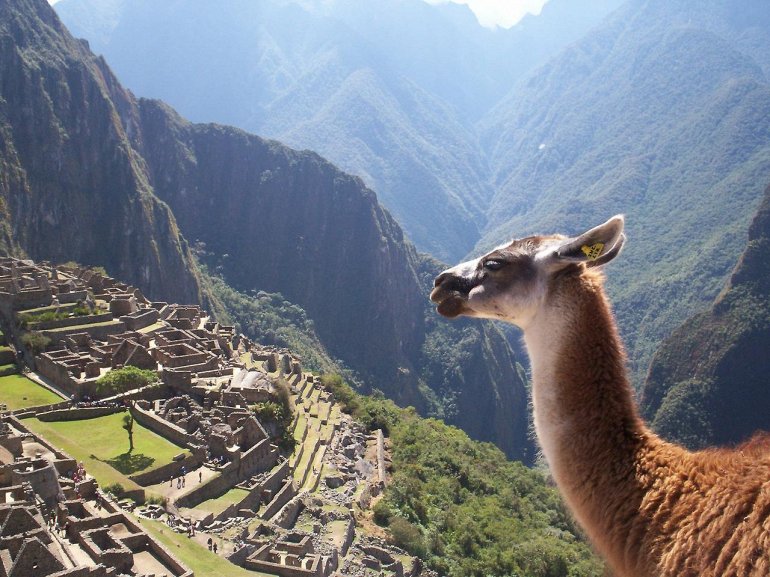
Based on the internal layout and other smaller details, archaeologists came to the conclusion that most of these structures served as warehouses, residences, temples, etc. According to rough estimates, more than a thousand Incas lived in and around the city

The Incas worshiped the sun god Inti and cultivated agricultural crops on special terraces. Palace buildings are easy to distinguish from ordinary houses - they are distinguished by the perfectly processed stone slabs from which they are made

Some ancient devices, perhaps for collecting rainwater, or washing something

According to the tiny amounts of information that have been found to date about the lost city, only a select few could enter Machu Picchu - the highest nobility, priests and their retinue, as well as the best artisans, because not everyone can harvest a good harvest at an altitude of more than 2 kilometers. In addition to these people, mamakunas were allowed here - selected virgins who devoted their entire lives to serving the god Inti
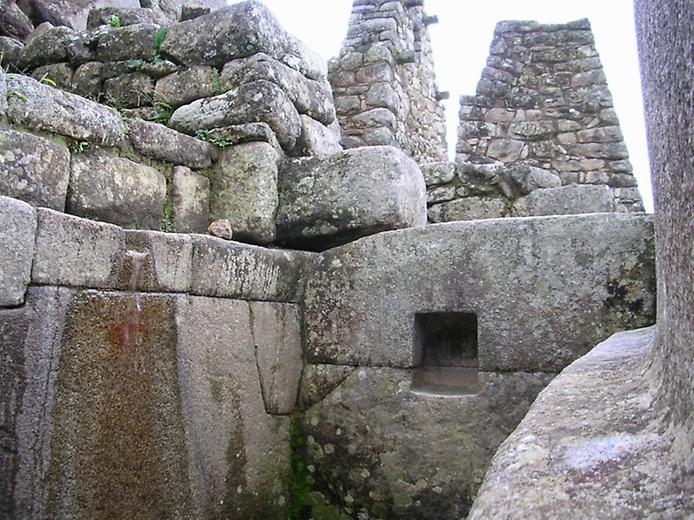

The Incas had a tradition of creating each city in the form of some creature. If you believe this, then Machu Picchu from a bird's eye view should resemble a condor. Apparently, this is how the Incas wanted to show or prove something to their gods
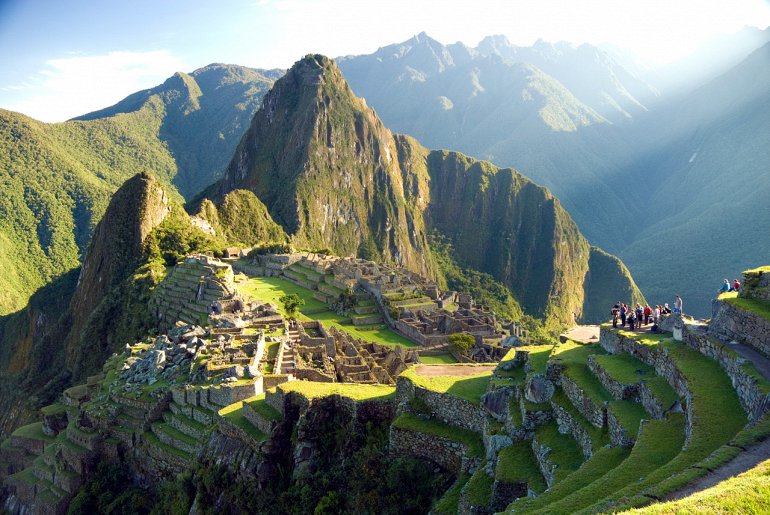
Archaeologists hoped to find answers to many questions by excavating Machu Picchu, but in the end they stumbled upon more large quantity questions. In the city, 173 skeletons were found, one and a half hundred of which were female, but not a single valuable item was found with them. In addition, there was another burial, different from the others - Bingham called it the tomb of the high priest - here they found the remains of a woman with syphilis, a small dog, several ceramic objects, a pair of skewers and woolen clothing

The farmers of Machu Picchu cultivated more than five hectares of land on special narrow terraces built right on the slopes of the mountains, and both the terraces and the stone steps leading to them were made to last for centuries - they have survived to us practically unchanged
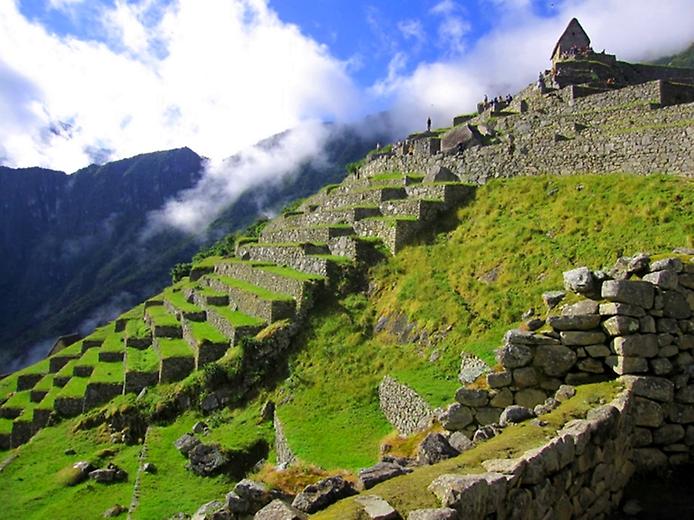
Terraces of Machu Picchu


The city itself was divided into sectors: the temple district, the residential sector, the dungeons and the cemetery. The Temple of the Three Windows, a key building in all Inca rituals, has also survived to this day. The sun's rays falling onto the square through the windows of the temple symbolize the three founders of the Inca Empire, who, according to legend, entered this world through these very windows

Above the Temple of Three Windows rises a small ancient observatory with interesting stone Intiwatana, which apparently served as a kind of sundial for the Inca priests. Intiwatana has another name - “control point of the Sun”. Some of the buildings at Machu Picchu were two stories high, with pointed thatched roofs. The stones were fitted to each other with amazing precision

An amazing feature of Machu Picchu is that the Incas built the entire city without using any fastening mixtures such as cement - all the buildings are held together by their own weight! In case of earthquakes (which happen here quite often), the Incas left special cracks in the masonry during construction, and the walls themselves were erected at an angle - thanks to such simple actions, they managed to build a mountain citadel that stood unharmed for many centuries, without even moving!

One of the archaeologists once put forward a theory according to which the well-being of the owner of the house can be judged by how tightly the stones are fitted in its masonry. This was also one of the factors that allowed researchers to judge that not everyone was allowed into Machu Picchu
![]()
Historians today don’t know much about the Incas, but there is still some information, for example, we know with a certain degree of probability that in the Inca traditions there were no human sacrifices - only animals were sacrificed to the gods, although quite a lot. In Machu Picchu, for example, white llamas were sacrificed in the morning and afternoon, and black llamas in the evening.

From Machu Picchu, a steep path leads to the top of the neighboring mountain Huayna Picchu, from where a beautiful panorama of the Urubamba River valley opens up. At the foot of Huayna Picchu is the Palace of the Moon.
![]()
Recently, the ancient Inca city was visited by up to 2,000 tourists per day, which forced UNESCO to demand that the number of visits be reduced to 800. To provide recreational support for this inaccessible historical monument, railway lines were laid in the neighboring city of Aguas Calientes, now receiving 10 trains per day, and there is a bus from the railway station to Machu Picchu. It was originally planned to build here cable car, but UNESCO was categorically against this, because and without it the flow of tourists already has to be reduced
By the way, the Inca trail to Machu Picchu along the Urubamba River through several passes has survived to this day, but if you want to walk along it, it will take at least several days...

In Peru, high in the Andes, almost at the very top mountain range The ancient Incan city of Machu Picchu has existed since very ancient times.
This “city among the clouds” was secret and inaccessible to ordinary people during the Inca Empire. The most important people of the Inca Empire lived in Machu Picchu.
The supreme rulers of the powerful Inca Empire took care of their safety and therefore the city was specially built at an inaccessible height above the valley of the Urubamba River.


 They remember pr...
They remember pr...

The great Inca ruler Pachacutec, foreseeing the approaching changes, ordered the construction of this city in such an inaccessible place in order to protect himself and his entourage. And he succeeded. Machu Picchu was built in such a place that it was almost impossible for an ignorant person to get to it. When the Spaniards invaded the Inca Empire in the 16th century, they never conquered the city.

The existence of the “lost city of the Incas” was only a legend for a long time. No one in the world knew if he really existed. There are no written mentions of him anywhere. And only at the beginning of the 20th century its existence was reported by the American Hiram Bingham, a professor at Yale University, who examined these places. But even after the discovery of Hiram Bingham, for thirty years there were no people who wanted to visit Machu Picchu. Until the employees of an archaeological expedition working in these places accidentally stumbled upon the ancient Inca Road, which led them through the valley to this ancient citadel.

The city itself has a fairly clear structure. On the south-eastern side are palace buildings. In the west is the main temple, in which an altar for sacrifices was built. Opposite is a compact residential area of two-story houses. It's quite big in size small town. There are about 200 buildings in it. According to simple calculations, a little over 1000 people lived here.

For those times, the city was built very, very competently, and in some places even original. All the buildings in the city are made of carefully processed stones, which fit together so tightly that no mortar was needed to hold them together. Moreover, the stones are laid so that there are small gaps between them. This provided the buildings with a kind of earthquake resistance. Despite frequent earthquakes in this area, the buildings are perfectly preserved.

One of the largest and apparently most revered buildings is the Temple of Three Windows. Through these windows the sun's rays enter the interior area. According to the legends of the Incas, this was part of a certain ritual, and the three windows identify the trinity of the world. According to an ancient legend, it was through these three windows that the three founders of the Inca Empire entered the world.
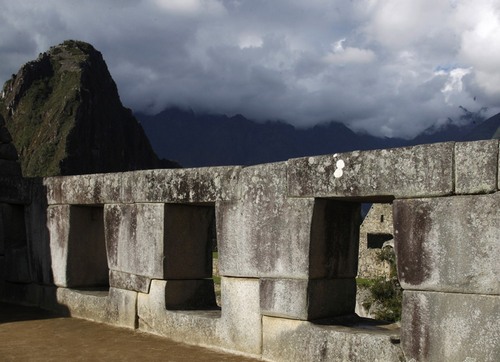
Not far from the temple, slightly higher, a building has been preserved, which, according to assumptions, could serve as an observatory for observing the celestial bodies. This also confirms the presence here of a stone of a special shape, strictly oriented towards the sun. The Indians call it Intiwatana or "control point of the sun." It's something like a sundial.

Several of the buildings are made as a kind of dungeon. Since no prisoners were kept here, it seems that women lived in them, the so-called priestesses of the sun, mamakunas - chosen virgins. But most likely these were ordinary concubines of the supreme rulers. As far as we know, the supreme rulers did not particularly bother with marriage. During the excavations, 173 human skeletons were discovered, of which 150 were female. And in the tomb of the chief priest, the remains of a woman with signs of syphilis were found. So all the research not only did not reveal, but on the contrary increased the number of secrets of this place hidden from people for centuries.
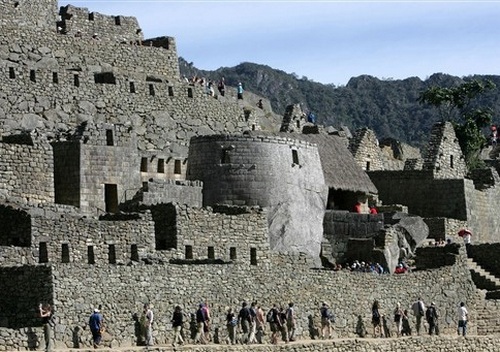
The city builders did not forget about the urgent needs of the city residents. Despite the extremely limited area, terraces for growing crops were artificially created on the rocky slopes near the settlement. It was very labor intensive to do this. The terraces are framed with hewn stones and covered with fertile soil. Moreover, all this is made firmly for centuries. total area There are more than 5 hectares of such artificial fields.

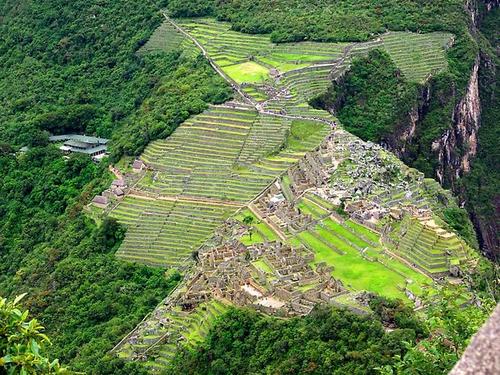
It is not clear how water was supplied to these terraces, but in the city itself there are some bowls, probably they were intended to collect rainwater. But this is for drinking in extreme cases. How were the plants growing on the terraces watered? It is possible that the Incas grew plants that did not require artificial watering, especially since frequent fogs over the river valley provided sufficient humidity.

And although Machu Picchu is located almost 1,000 meters lower than the ancient capital of the Incas, Cusco, this unique place is ideally protected from prying eyes by nature itself. It is also surprising that in the valley of the Urubamba River there is almost never wind. But even during the day there is twilight here - the peaks of the mountain obscure the sunlight, and the water rolling over the huge boulders muffles all sounds. It’s useless to even shout here, your voice will simply not be heard.

According to historical data, the city did not exist for so long, from 1440 to 1532. And although the Spanish conquerors never got to Machu Picchu, for some unknown reason the inhabitants left this city. And since then it has stood surrounded by clouds, silently keeping its secret.

Today anyone can get to Machu Picchu, but only 9 months a year. The road from Cusco to Machu Picchu still exists in the same form as it was made by the Inca builders. You can get there by car or small bus. Usually tourists are offered to ride down on a llama. This exotic form of transport is still the most indispensable in the Andes.

If you travel to South America, do not miss this opportunity to visit this unique place. Impressions received from touching ancient civilization the Incas will remain with you for the rest of your life.
Video: Ancient city of Machu...
Journey to the Golden Gods
Machu Picchu is a unique architectural object; in grandeur, scale and pristineness it can only be compared with Egyptian pyramids. But if the legacy of the pharaohs, the messengers of the ancient Gods, has been studied far and wide by numerous archaeologists and historians, then the Incas, with their amazing successes in astronomy and urban planning, still cause controversy and disagreement in pseudo-scientific circles. It is precisely its secret, combined with the incredibly beautiful landscapes surrounding the remains of the once abandoned high in the mountains great civilization, attract millions of tourists to Peru every year.
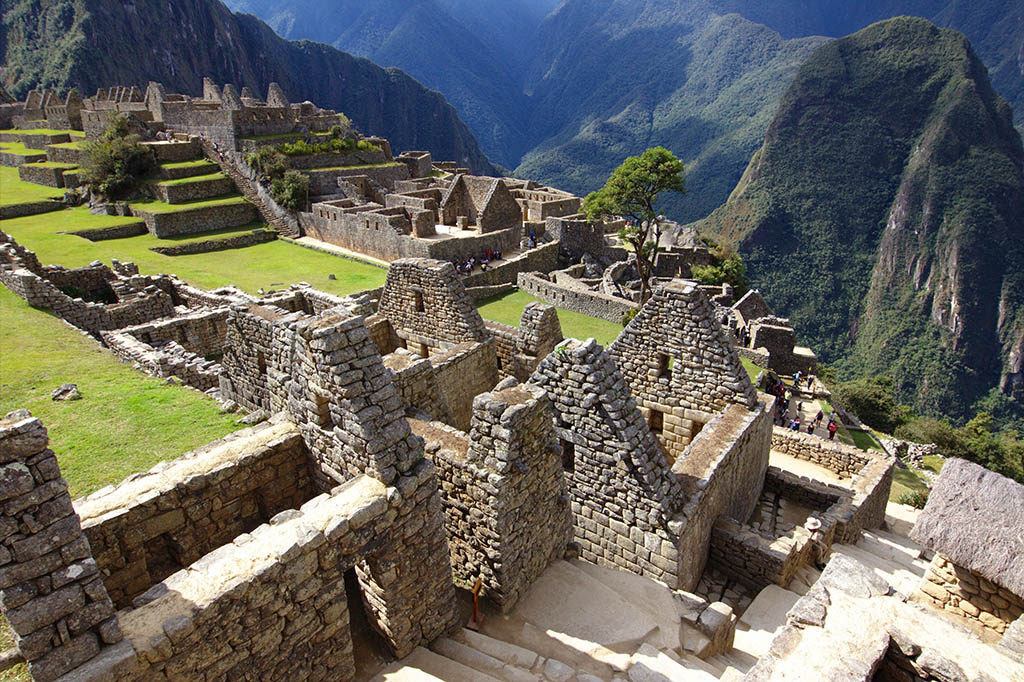
Machu Picchu. Story recent years life
Briefly about the past days

Machu Picchu ancient Inca city was founded by the ruler Pacachutec in 1440 (according to some sources in 1438) and became a refuge from the tyranny of the Spanish conquistadors for several thousand people. The distance from the territories occupied by the Incas played a key role in the life of the city; The Spaniards, who at that time had captured almost all the surrounding lands, bypassed the settlement in the mountains. In 1532, an event occurred that still excites the minds of many lovers. mystical stories – inhabitants of Machu Picchu disappeared without a trace. And now the area dead city has become a source of rich knowledge about the ancient Peruvian people and a place of pilgrimage for tourists from all over the world.
In the footsteps of a modern-day Indiana Jones

A man named Hiram Bingham was able to discover a settlement hidden high in the mountains in 1911. For his exciting discovery and the enormous, many years of work spent in the ruins of Machu Picchu, he gained a reputation as an archaeologist and scientist fascinated by the idea of a lost city. Already in our time, the name of Hiram Bingham will be associated with the cult character created by director Steven Spielberg - Indiana Jones. And this association is not accidental. The path taken by this man: from libraries, where he collected bit by bit information about a distant civilization hidden in the abyss of history to the moment when the cleared territory Macha Piccha showed him majestic buildings, immersed in the rays of the mountain sun, worthy of the best film adaptation.
And although many of Bingham’s conclusions were later refuted modern research, it was thanks to the work of this American archaeologist and politician that the world became aware of Machu Picchu.
What to pay attention to
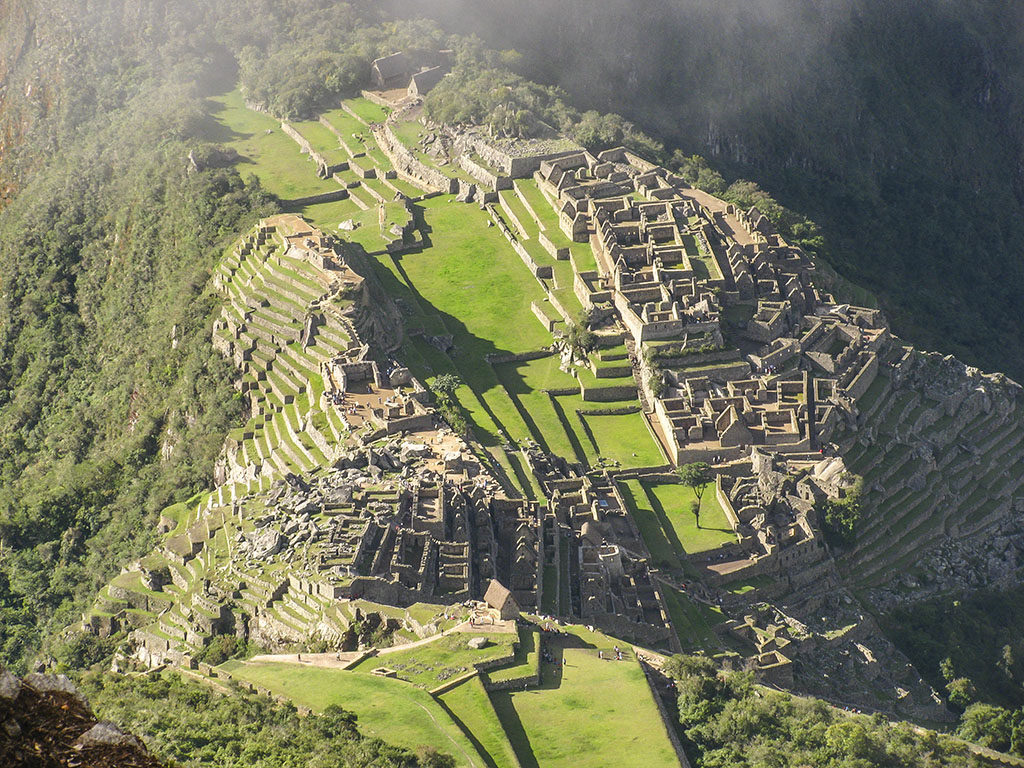
The Incas were famous for their architectural talents, and Machu Picchu is proof of this. The Peruvian residents chose the location perfectly. Its territory was chosen so that it could not be seen from below, and its height made it possible to provide residents with clean water and provisions.
In the most high point The Intuatana stone is located - a sacred object for the inhabitants of Machu Picchu, which, according to many experts, performed a religious function. Its calendar properties were also irreplaceable. Thanks to the shadow cast by the sacred stone, the Incas understood what agricultural work should be started.

The main temple, where the priests offered sacrifice to their gods, and the Temple of the Three Windows, the purpose of which is unknown to this day, are located in the main temple complex.
Of particular interest may be the Temple of the Sun God, it was called Inti. The highlight of the structure is the mountain peak located in the very center, hewn by the Incas using hand tools.

The Temple of the Condor, named because of its resemblance to the shape of this type of bird, has a special architecture. In its center there is a small recess with several shelves of unknown purpose. In front of the entrance there is a huge boulder similar in outline to the head of a condor. Scientists believe that this could have been a place of sacrifice; the stone has special grooves for drainage (possibly blood). There is a version that the Incas could have used this building as a prison.
Travel notes
Machu Picchu: how to get there?
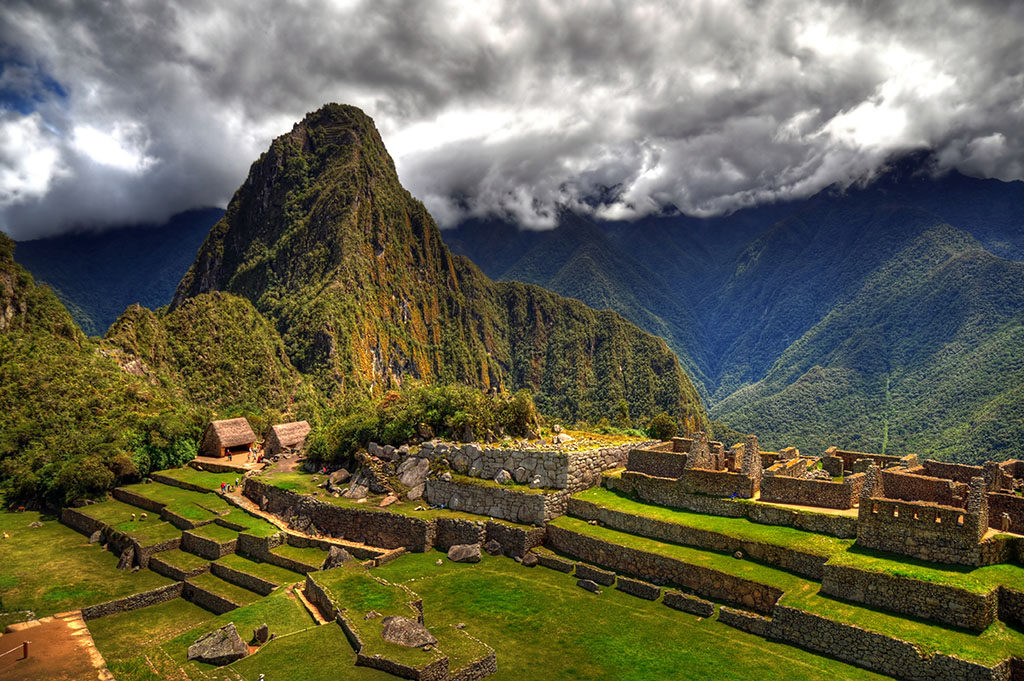
To see with your own eyes the greatness of the Inca civilization, to touch the mysterious history of their disappearance, to walk between the ruins that were part of the divine city many centuries ago, you will have to cover a distance of 13,000 kilometers.
Unfortunately, direct transport communication between Russia and Peru does not exist, so the flight will have to be made with a transfer in Spain or Cuba. Its price varies between 700 US dollars. You can choose several airlines for your flight: Russian Aeroflot, KLM or a passenger carrier called Iberia.

After arriving in Lima, the capital of Peru, you will travel to the main Inca settlement - the city of Cusco. You can get there by bus from the Cruz del Sur company, which departs from the capital twice a day. This pleasure will cost 70 soles ($20). The salons are equipped with everything to make the passenger feel as comfortable as possible: TV, wi-fi, comfortable, soft chairs. The disadvantage of this method is its duration; You will be on the road for about a day.
Cusco can also be reached by air; flights operate several times a day. The cost is $200 per person. However, the amount spent pays for itself: the journey will take only an hour and a half, and you won’t have to shake on the bumpy roads of the serpentine mountains. Railway connections between Lima and Cusco does not exist.
![]()
The next part of the 110-kilometer journey can be covered by choosing a car or train as a means of transportation. The second option is preferable; it allows tourists to admire the stunning landscapes as the train slowly climbs up. Price: $150 round trip per person. If you have a few hours of free time, you can try to get by bus (70 soles) to Hydroelectrica. This is about a five hour journey. From Hydroelectrica it is a three-hour walk to the village of Aguas Picchu, where the bus stop is located.
From the final station to Machu Picchu, height located 2.4 km above sea level, local buses run. The trip costs 7-10 dollars and takes about twenty minutes. The cramped space of a crowded cabin can be exchanged for walking; There is something romantic in this method, in the spirit of adventurers, because you have to climb the Inca trail, surrounded by the impenetrable Peruvian jungle.
Book in advance
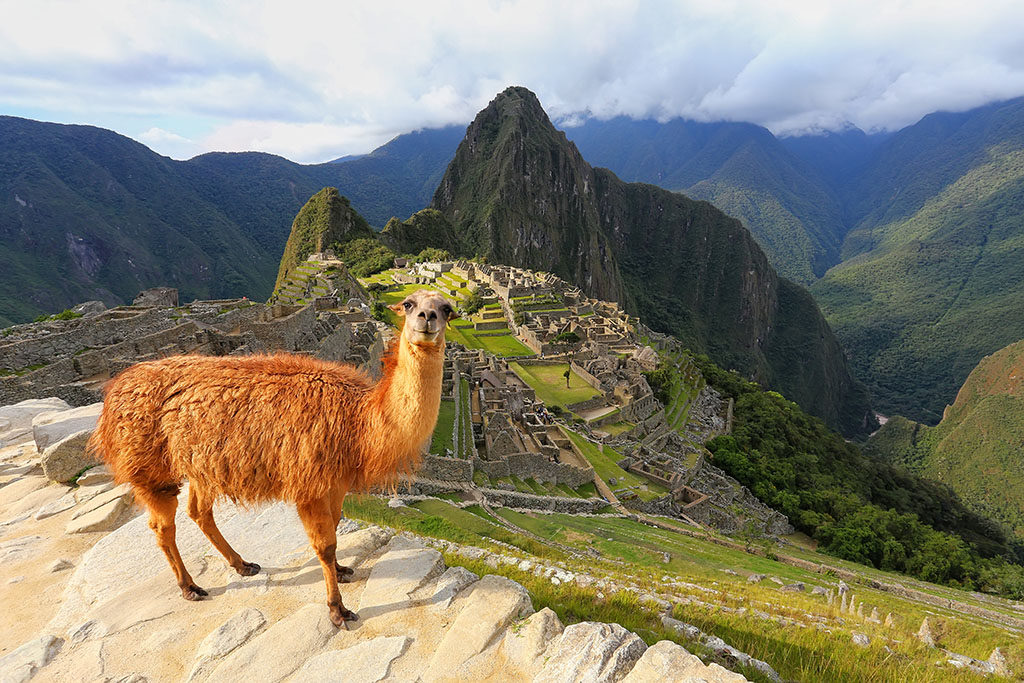
Peru is not a country where everything can be done as quickly as possible, so you need to take care of purchasing tickets as early as possible.
Tickets can be purchased at the entrance, at the ticket office. Its cost for tourists ranges from $50. For students with an ISIC certificate the price is half the price.
If you have a strong desire to get to Huyanu Picchu, then book admission ticket must be made no later than three months before the scheduled travel date. Do not forget that there is a restriction on visiting Huaynu Picchu - no more than 400 people can climb this mountain sacred to the Incas every day. The first group of 200 people starts at 7.00 am, for the rest of the group access to the complex is open from 10.00.

Machu Picchu, photo which can be found on the World Wide Web or in numerous thematic magazines, is a place where everyone who is awestruck by the story of the mysterious disappearance of a once powerful people should visit. This is a place where the best minds have been struggling with its mysteries for a hundred years now. modern world, about which writers and filmmakers create new stories year after year.
Machu Picchu is a place that cannot be described in words. You need to see it, and no amount of money can compare with the mass of impressions that you will receive when you find yourself among dilapidated houses and temples, where the life of the ancient people, filled with the bright colors of the surrounding world, once seethed.

Machu Picchu to this day remains evidence of the former power of the Inca Empire. More than 500 years ago, Incan achievements in construction made it possible to lay stone blocks so closely together without mortar that it was impossible to insert a knife into the cracks.
Previously, all buildings had roofs. With them the city would have a completely different look.
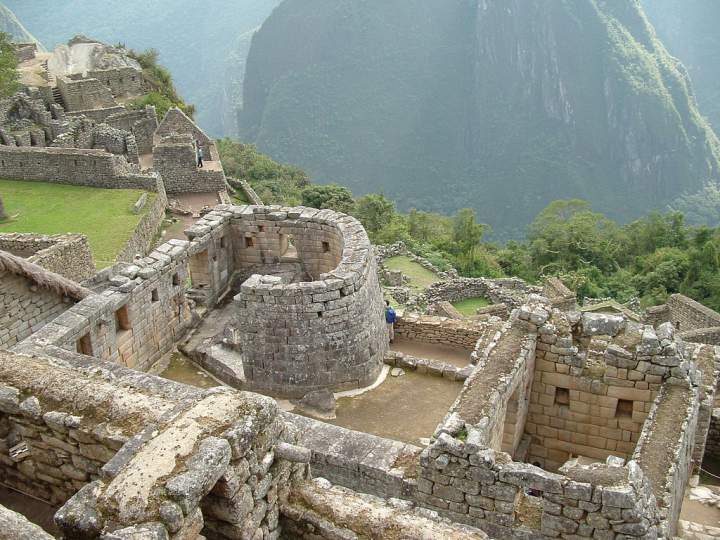
The remains of Machu Picchu (or as it is also called “the city among the clouds”) are located on a high mountain ridge 2450 meters high, surrounded on three sides by the turbulent Urubamba River. It is still unknown what purpose all these palaces, squares, temples and residential buildings served. Perhaps it was a military fortress, temple complex or a mountain retreat for rulers. The location is ideal for any purpose.
Translated from the local language, Machu Picchu means “ Old Mountain" Huayna Picchu (Young Mountain) rises nearby; it usually appears in all photos of the ancient city.
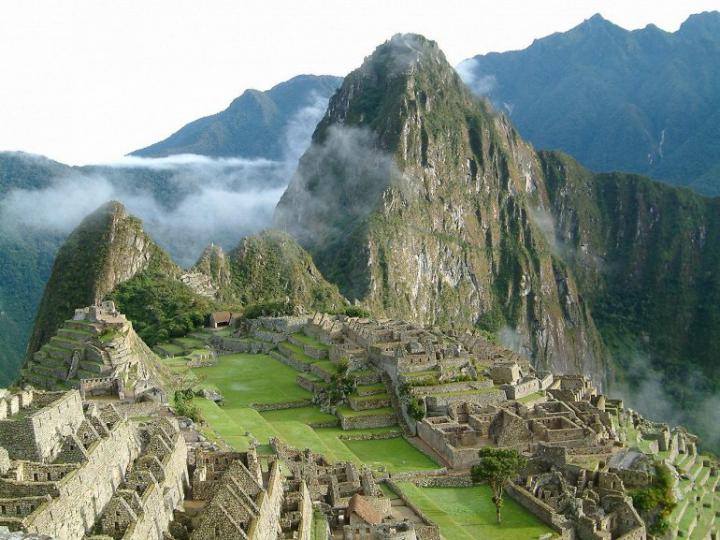
The “City in the Sky” itself became known to the whole world only in 1911, when a Peruvian guide led Yale University professor Hiram Bingham to the entrance to the lost complex. Although the indigenous people knew about the existence of Machu Picchu, they did not tell the Spanish invaders. It was thanks to them that the city remained inviolable.

Every piece of knowledge, every step and slab is proof of the unsurpassed skill of the builders of Machu Picchu. Walls, terraces and ramps fit perfectly to the surface of the mountain, like pieces of a puzzle. The city has preserved about 700 terraces that were used for growing food. Each such terrace had an irrigation system, water into which came from containers to collect moisture after rain or condensation.
It is difficult to imagine how much work must be put in to produce such masonry by hand.
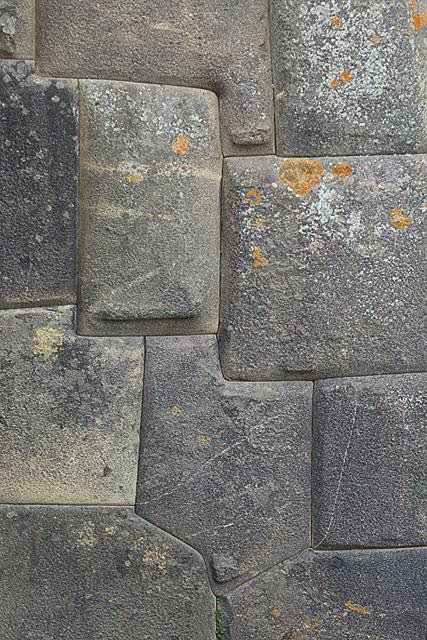
All terraces were previously used for growing food.
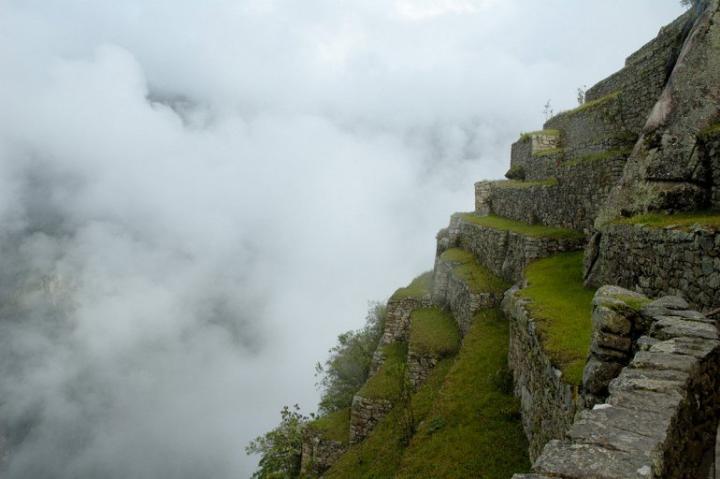
The achievements and skills of the Incas are even more amazing when you find out what tools they used. When Machu Picchu was created (in the 15-16th century), the Incas did not know iron, steel, or even wheels. This entire huge complex was built by a small group of people, no more than a thousand, and they used primitive tools made of stone.
In 1911, for several days, Hiram Bingham's expedition, accompanied by Indians, made its way through the jungle to the foot of Machu Picchu Mountain in Peru. The ancient lost city of Machu Picchu with its undestroyed observatories, temples and houses appeared before the researchers completely intact. No human has set foot in these places for a long time.

Machu Picchu is truly an important architectural monument South America, and in 2007 it received the status of a new wonder of the world. The city from the time of the sons of the Sun of the Incas has reached us safe and sound, and its beauty is incomparable with many other cities around the world.
History of the construction of the city of Machu Picchu
The name Machu Picchu was given to the city by its discoverer, but the present one was forever hidden in the memory of centuries. The city is located 120 kilometers from the famous Cusco near the Urubamba River. It is believed that Machu Picchu was built by Pachacuti, who reigned from 1438 to 1471. At first, Machu Picchu occupied a secondary role, but after the capture of the Spaniards, Cusco became the main and the last city Incas, where their civilization came to an end.

The Spaniards never visited here, but still civilization began to fade away. Conservation from others settlements, the gradual overgrowth of the city reduced its population. And this continued until its last resident died. Bingham found several dozen skeletons here, most of which were female.
One has only to marvel at the skill of the ancient builders. The buildings, located in a hard-to-reach place, are at different heights, and more than a hundred stone stairs had to be made to connect them. All the city's buildings are made in cyclopean masonry - the stones are held together only by their own weight. Due to the unevenness of the terrain and the presence of sometimes strong slopes, the stones have special convexities for greater stability. It is also worth noting that all these stone colossuses, according to the level of development of the Incas, were erected exclusively by human forces without the use of special devices.
Description of the districts of the ancient city
The central district of the city is the Acropolis. Here is the Temple of the Sun Itiutana, the only extant temple dedicated to the supreme deity of the Incas. There is also the Temple of the High Priest and the Temple of the Three Windows, named because of the three large windows in the stonework.
![]()
Temple of Three Windows
The next quarter is Royal. Its construction dates back to the 15th -16th centuries. Here is the fortress temple of Torreon, a semicircular tower with many small altars. Not far from it is the Princess Palace, where the Inca Queen Coya, or daughter of the Inca chief, lived. It is believed that the Inca himself lived here in a palace consisting of two buildings. But this is only a guess, and the obligatory Inca residence at Machu Picchu has not been confirmed.

Torreon
The next block is allocated for ordinary houses. Behind the ridge of stone ramparts is the artisans' quarter. Even further away is the building where the judges and executioners were supposed to be located. Not far from here is a semblance of a city prison with hooks for chaining prisoners.

Jail
Behind the prison there are caves with burials. The exquisite decoration of the cave rooms suggests that noble people of the city, and perhaps the entire Inca Empire, were buried here, whose mummies could have been transferred from the sack of Cuzco.
By the way, research into this ancient Incan city continues, and who knows what discoveries are hidden in the ruins of the magnificent cultural monument of Machu Picchu.
Video about Machu Picchu
Where is Machu Picchu on the map?
Read similar articles
